Technology (RSS)
-
Top Announcements of the AWS Summit in New York, 2023
aws.amazon.com Top Announcements of the AWS Summit in New York, 2023 | Amazon Web ServicesIt’ll be a full house as the AWS Summit gets underway in New York City on Wednesday, July 26, 2023. The cloud event has something for everyone including a keynote, breakout sessions, opportunities to network, and of course, to learn about the latest exciting AWS product announcements. Today, we’re s...

It’ll be a full house as the AWS Summit gets underway in New York City on Wednesday, July 26, 2023. The cloud event has something for everyone including a keynote, breakout sessions, opportunities to network, and of course, to learn about the latest exciting AWS product announcements.
Today, we’re sharing a selection of announcements to get the fun started. We’ll also share major updates from Wednesday’s keynote, so check back for more exciting news to come soon.
If you want to attend the event virtually, you can still register for the keynote livestream.
(This post was last updated: 5:35 p.m. PST, July 25, 2023.)
AWS product announcements from July 25, 2023
Introducing AWS HealthImaging — purpose-built for medical imaging at scale This new HIPAA-eligible service empowers healthcare providers and their software partners to store, analyze, and share medical imaging data at petabyte scale.
Amazon Redshift now supports querying Apache Iceberg tables (preview) Apache Iceberg, one of the most recent open table formats, has been used by many customers to simplify data processing on rapidly expanding and evolving tables stored in data lakes.
AWS Glue Studio now supports Amazon Redshift Serverless Before this launch, developers using Glue Studio only had access to Redshift tables in Redshift clusters. Now, those same developers can connect to Redshift Serverless tables directly without manual configuration.
Snowflake connectivity for AWS Glue for Apache Spark is now generally available AWS Glue for Apache Spark now supports native connectivity to Snowflake, which enables users to read and write data without the need to install or manage Snowflake connector libraries.
AWS Glue jobs can now include AWS Glue DataBrew Recipes The new integration makes it simpler to deploy and scale DataBrew jobs and gives DataBrew users access to AWS Glue features not available in DataBrew.
-
AWS Week in Review – Redshift+Forecast, CodeCatalyst+GitHub, Lex Analytics, Llama 2, and Much More – July 24, 2023
aws.amazon.com AWS Week in Review – Redshift+Forecast, CodeCatalyst+GitHub, Lex Analytics, Llama 2, and Much More – July 24, 2023 | Amazon Web ServicesSummer is in full swing here in Seattle and we are spending more time outside and less at the keyboard. Nevertheless, the launch machine is running at full speed and I have plenty to share with you today. Let’s dive in and take a look! Last Week’s Launches Here are some launches that caught my […]
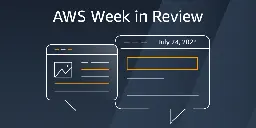
Summer is in full swing here in Seattle and we are spending more time outside and less at the keyboard. Nevertheless, the launch machine is running at full speed and I have plenty to share with you today. Let’s dive in and take a look!
Last Week’s Launches Here are some launches that caught my eye:
Amazon Redshift – Amazon Redshift ML can now make use of an integrated connection to Amazon Forecast. You can now use SQL statements of the form CREATE MODEL to create and train forecasting models from your time series data stored in Redshift, and then use these models to make forecasts for revenue, inventory, demand, and so forth. You can also define probability metrics and use them to generate forecasts. To learn more, read the What’s New and the Developer’s Guide.
Amazon CodeCatalyst – You can now trigger Amazon CodeCatalyst workflows from pull request events in linked GitHub repositories. The workflows can perform build, test, and deployment operations, and can be triggered when the pull requests in the linked repositories are opened, revised, or closed. To learn more, read Using GitHub Repositories with CodeCatalyst.
Amazon Lex – You can now use the Analytics on Amazon Lex dashboard to review data-driven insights that will help you to improve the performance of your Lex bots. You get a snapshot of your key metrics, and the ability to drill down for more. You can use conversational flow visualizations to see how users navigate across intents, and you can review individual conversations to make qualitative assessments. To learn more, read the What’s New and the Analytics Overview.
Llama2 Foundation Models – The brand-new Llama 2 foundation models from Meta are now available in Amazon SageMaker JumpStart. The Llama 2 model is available in three parameter sizes (7B, 13B, and 70B) with pretrained and fine-tuned variations. You can deploy and use the models with a few clicks in Amazon SageMaker Studio, and you can also use the SageMaker Python SDK (code and docs) to access them programmatically. To learn more, read Llama 2 Foundation Models from Meta are Now Available in Amazon SageMaker JumpStart and the What’s New.
X in Y – We launched some existing services and instances types in additional AWS Regions:
AWS Supply Chain in Asia Pacific (Sydney) and Europe (Ireland).
EC2 X2idn Instances in Middle East (UAE).
EC2 C6in Instances in Europe (Paris) and Middle East (UAE).
AWS Elemental MediaPackage in Canada (Central).
For a full list of AWS announcements, be sure to keep an eye on the What's New at AWS page. Other AWS News Here are some additional blog posts and news items that you might find interesting:
AWS Open Source News and Updates – My colleague Ricardo has published issue 166 of his legendary and highly informative AWS Open Source Newsletter!
CodeWhisperer in Action – My colleague Danilo wrote an interesting post to show you how to Reimagine Software Development With CodeWhisperer as Your AI Coding Companion.
News Blog Survey – If you have read this far, please consider taking the AWS Blog Customer Survey. Your responses will help us to gauge your satisfaction with this blog, and will help us to do a better job in the future. This survey is hosted by an external company, so the link does not lead to our web site. AWS handles your information as described in the AWS Privacy Notice.
CDK Integration Tests – The AWS Application Management Blog wrote a post to show you How to Write and Execute Integration Tests for AWS CDK Applications.
Event-Driven Architectures – The AWS Architecture Blog shared some Best Practices for Implementing Event-Driven Architectures in Your Organization.
Amazon Connect – The AWS Contact Center Blog explained how to Manage Prompts Programmatically with Amazon Connect.
Rodents – The AWS Machine Learning Blog showed you how to Analyze Rodent Infestation Using Amazon SageMaker Geospatial Capabilities.
Secrets Migration – The AWS Security Blog published a two-part series that discusses migrating your secrets to AWS Secrets Manager (Part 1: Discovery and Design, Part 2: Implementation).
Upcoming AWS Events Check your calendar and sign up for these AWS events:
AWS Storage Day – Join us virtually on August 9th to learn about how to prepare for AI/ML, deliver holistic data protection, and optimize storage costs for your on-premises and cloud data. Register now.
AWS Global Summits – Attend the upcoming AWS Summits in New York (July 26), Taiwan (August 2 & 3), São Paulo (August 3), and Mexico City (August 30).
AWS Community Days – Attend upcoming AWS Community Days in The Philippines (July 29-30), Colombia (August 12), and West Africa (August 19).
re:Invent – Register now for re:Invent 2023 in Las Vegas (November 27 to December 1).
That’s a Wrap And that’s about it for this week. I’ll be sharing additional news this coming Friday on AWS on Air – tune in and say hello!
— Jeff;
-
Amazon Route 53 Resolver Now Available on AWS Outposts Rack
aws.amazon.com Amazon Route 53 Resolver Now Available on AWS Outposts Rack | Amazon Web ServicesStarting today, Amazon Route 53 Resolver is now available on AWS Outposts rack, providing your on-premises services and applications with local DNS resolution directly from Outposts. Local Route 53 Resolver endpoints also enable DNS resolution between Outposts and your on-premises DNS server. Route ...
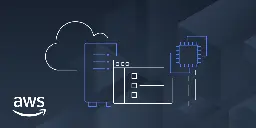
Starting today, Amazon Route 53 Resolver is now available on AWS Outposts rack, providing your on-premises services and applications with local DNS resolution directly from Outposts. Local Route 53 Resolver endpoints also enable DNS resolution between Outposts and your on-premises DNS server. Route 53 Resolver on Outposts helps to improve your on-premises applications availability and performance.
AWS Outposts provides a hybrid cloud solution that allows you to extend your AWS infrastructure and services to your on-premises data centers. This enables you to build and operate hybrid applications that seamlessly integrate with your existing on-premises infrastructure. Your applications deployed on Outposts benefit from low-latency access to on-premises systems. You also get a consistent management experience across AWS Regions and your on-premises environments. This includes access to the same AWS management tools, APIs, and services that you use when managing AWS services in a Region. Outposts uses the same security controls and policies as AWS in the cloud, providing you with a consistent security posture across your hybrid cloud environment. This includes data encryption, identity and access management, and network security.
One of the typical use cases for Outposts is to deploy applications that require low-latency access to on-premises systems, such as factory equipment, high-frequency trading applications, or medical diagnosis systems.
DNS stands for Domain Name System, which is the system that translates human-readable domain names like “example.com” into IP addresses like “93.184.216.34” that computers use to communicate with each other on the internet. A Route 53 Resolver is a component that is responsible for resolving domain names to IP addresses.
Until today, applications and services running on an Outpost forwarded their DNS queries to the parent AWS Region the Outpost is connected to. But remember, as Amazon CTO Dr Werner Vogels says: everything fails all the time. There can be temporary site disconnections—think about fiber cuts or weather events. When the on-premises facility becomes temporarily disconnected from the internet, local DNS resolution fails, making it difficult for applications and services to discover other services, even when they are running on the same Outposts rack. For example, applications running locally on the Outpost won’t be able to discover the IP address of a local database running on the same Outpost, or a microservice won’t be able to locate other microservices running locally.
Starting today, when you opt in for local Route 53 Resolvers on Outposts, applications and services will continue to benefit from local DNS resolution to discover other services—even in a parent AWS Region connectivity loss event. Local Resolvers also help to reduce latency for DNS resolutions as query results are cached and served locally from the Outposts, eliminating unnecessary round-trips to the parent AWS Region. All the DNS resolutions for applications in Outposts VPCs using private DNS are served locally.
In addition to local Resolvers, this launch also enables local Resolver endpoints. Route 53 Resolver endpoints are not new; creating inbound or outbound Resolver endpoints in a VPC has been available since November 2018. Today, you can also create endpoints inside the VPC on Outposts. Route 53 Resolver outbound endpoints enable Route 53 Resolvers to forward DNS queries to DNS resolvers that you manage, for example, on your on-premises network. In contrast, Route 53 Resolver inbound endpoints forward the DNS queries they receive from outside the VPC to the Resolver running on Outposts. It allows sending DNS queries for services deployed on a private Outposts VPC from outside of that VPC.
Let’s See It in Action To create and test a local Resolver on Outposts, I first connect to the Outpost section of the AWS Management Console. I navigate to the Route 53 Outposts section and select Create Resolver.
I select the Outpost on which I want to create the Resolver and enter a Resolver name. Then, I select the size of the instances to deploy the Resolver and the number of instances. The selection of instance size impacts the performance of the Resolver (the number of resolutions it can process per second). The default is an m5.large instance able to handle up to 7,000 queries per second. The number of instances impacts the availability of the Resolver, the default is four instances. I select Create Resolver to create the Resolver instances.
After a few minutes, I should see the Resolver status becoming Operational.
The next step is to create the Resolver endpoint. Inbound endpoints allow to forward external DNS queries to the local Resolver on the Outpost. Outbound endpoints allow to forward locally initiated DNS queries to external DNS resolvers you manage. For this demo, I choose to create an inbound endpoint.
Under the Inbound endpoints section, I select Create inbound endpoint.
I enter an Endpoint name, I choose the VPC in the Region to attach this endpoint to, and I select the previously created Security group for this endpoint.
I select the IP address the endpoint will consume in each subnet. I can select to Use an IP address that is selected automatically or Use an IP address that I specify.
Finally, I select the instance type to bind to the inbound endpoint. The larger the instance, the more queries per second it will handle. The service creates two endpoint instances for high availability.
When I am ready, I select the Create inbound endpoint to start the creation process.
After a few minutes, the endpoint Status becomes Operational.
The setup is now ready to test. I therefore SSH-connect to an EC2 instance running on the Outpost, and I test the time it takes to resolve an external DNS name. Local Resolvers cache queries on the Outpost itself. I therefore expect my first query to take a few milliseconds and the second one to be served immediately from the cache.
Indeed, the first query resolves in 13 ms (see the line ;; Query time: 13 msec).
➜ ~ dig amazon.com
; <<>> DiG 9.16.38-RH <<>> amazon.com ;; global options: +cmd ;; Got answer: ;; ->>HEADER<<- opcode: QUERY, status: NOERROR, id: 35859 ;; flags: qr rd ra; QUERY: 1, ANSWER: 3, AUTHORITY: 0, ADDITIONAL: 1
;; OPT PSEUDOSECTION: ; EDNS: version: 0, flags:; udp: 1232 ;; QUESTION SECTION: ;amazon.com. IN A
;; ANSWER SECTION: amazon.com. 797 IN A 52.94.236.248 amazon.com. 797 IN A 205.251.242.103 amazon.com. 797 IN A 54.239.28.85
;; Query time: 13 msec ;; SERVER: 10.0.0.2#53(10.0.0.2) ;; WHEN: Sun May 28 09:47:27 CEST 2023 ;; MSG SIZE rcvd: 87
And when I repeat the same query, it resolves in zero milliseconds, showing it is now served from a local cache.
➜ ~ dig amazon.com
; <<>> DiG 9.16.38-RH <<>> amazon.com ;; global options: +cmd ;; Got answer: ;; ->>HEADER<<- opcode: QUERY, status: NOERROR, id: 63500 ;; flags: qr rd ra; QUERY: 1, ANSWER: 3, AUTHORITY: 0, ADDITIONAL: 1
;; OPT PSEUDOSECTION: ; EDNS: version: 0, flags:; udp: 1232 ;; QUESTION SECTION: ;amazon.com. IN A
;; ANSWER SECTION: amazon.com. 586 IN A 54.239.28.85 amazon.com. 586 IN A 205.251.242.103 amazon.com. 586 IN A 52.94.236.248
;; Query time: 0 msec ;; SERVER: 10.0.0.2#53(10.0.0.2) ;; WHEN: Sun May 28 09:50:58 CEST 2023 ;; MSG SIZE rcvd: 87
Pricing and Availability Remember that only the Resolver and the VPC endpoints are deployed on your Outposts. You continue to manage your Route 53 zones and records from the AWS Regions. The local Resolver and its endpoints will consume some capacity on the Outposts. You will need to provide four EC2 instances from your Outposts for the Route 53 Resolver and two other instances for each Resolver endpoint.
Your existing Outposts racks must have the latest Outposts software for you to use the local Route 53 Resolver and the Resolver endpoints. You can raise a ticket with us to have your Outpost updated (the console will also remind you to do so when needed).
The local Resolvers are provided without additional cost. The endpoints are charged per elastic network interface (ENI) per hour, as is already the case today.
You can configure local Resolvers and local endpoints in all AWS Regions where Outposts racks are available, except in AWS GovCloud (US) Regions. That’s a list of 22 AWS Regions as of today.
Go and configure local Route 53 Resolvers on Outposts now!
-- seb
P.S. We’re focused on improving our content to provide a better customer experience, and we need your feedback to do so. Please take this quick survey to share insights on your experience with the AWS Blog. Note that this survey is hosted by an external company, so the link does not lead to our website. AWS handles your information as described in the AWS Privacy Notice.
-
Modi’s chipmaking plan flounders as firms struggle to find tech partners
www.reutersagency.com Modi's chipmaking plan flounders as firms struggle to find tech partners - Reuters News AgencyReuters reported that big companies including a Foxconn joint venture that bid for India's $10 billion semiconductor incentives are struggling due to the

Reuters reported that big companies including a Foxconn joint venture that bid for India’s $10 billion semiconductor incentives are struggling due to the lack of a technology partner, a major setback for Prime Minister Narendra Modi’s chipmaking ambitions. The post Modi’s chipmaking plan flounders as firms struggle to find tech partners appeared first on Reuters News Agency.
-
Vodafone, Hutchison to announce UK merger as soon as Friday
www.reutersagency.com Vodafone, Hutchison to announce UK merger as soon as Friday - Reuters News AgencyReuters exclusively reported that Vodafone (VOD.L) and CK Hutchison (0001.HK) are in the final stage of agreeing to merge their British operations, with

Reuters exclusively reported that Vodafone (VOD.L) and CK Hutchison (0001.HK) are in the final stage of agreeing to merge their British operations, with an announcement expected as soon as Friday or early next week. The post Vodafone, Hutchison to announce UK merger as soon as Friday appeared first on Reuters News Agency.
-
Foxconn dumps $19.5 bln Vedanta chip plan in blow to India
www.reutersagency.com Foxconn dumps $19.5 bln Vedanta chip plan in blow to India - Reuters News AgencyReuters was first to report that Taiwan's Foxconn has withdrawn from a $19.5 billion semiconductor joint venture with Indian metals-to-oil conglomerate

Reuters was first to report that Taiwan’s Foxconn has withdrawn from a $19.5 billion semiconductor joint venture with Indian metals-to-oil conglomerate Vedanta, in a setback to Prime Minister Narendra Modi’s chipmaking plans for India. The world’s largest contract electronics maker signed a pact with Vedanta last year to set up semiconductor and display production plants in Modi’s home state of Gujarat but said Monday it was not going to move forward. Reuters was again first to report further details of Foxconn’s pullout, with a source saying New Delhi had raised several questions on the cost estimates provided to request incentives from India’s government, and concerns about incentive approval delays also contributed to the decision. The post Foxconn dumps $19.5 bln Vedanta chip plan in blow to India appeared first on Reuters News Agency.
-
US will not award $200 mln grant for Microvast battery company
www.reutersagency.com US will not award $200 mln grant for Microvast battery company - Reuters News AgencyReuters was first to report that the U.S. Department of Energy had scrapped a proposed $200 million grant to lithium battery company Microvast Holdings

Reuters was first to report that the U.S. Department of Energy had scrapped a proposed $200 million grant to lithium battery company Microvast Holdings after lawmakers cited concerns over its alleged links to China’s government. Microvast shares lost nearly a quarter of their value after the story was published. The Energy Department had been in talks with Microvast over the grant to help build a plant in Tennessee using funds from the $1 trillion 2021 bipartisan infrastructure law. The post US will not award $200 mln grant for Microvast battery company appeared first on Reuters News Agency.
-
AI rules ‘cannot be bargained’, EU’s Breton says after OpenAI CEO threat
www.reutersagency.com AI rules 'cannot be bargained', EU's Breton says after OpenAI CEO threat - Reuters News AgencyReuters exclusively reported that EU industry chief Thierry Breton has said proposed EU rules on artificial intelligence are not up for bargaining, in

Reuters exclusively reported that EU industry chief Thierry Breton has said proposed EU rules on artificial intelligence are not up for bargaining, in response to OpenAI CEO Sam Altman’s threat to quit Europe if the rules are too onerous. Altman caved the following day after Breton’s comments, tweeting that OpenAI was not going to leave the bloc. The post AI rules ‘cannot be bargained’, EU’s Breton says after OpenAI CEO threat appeared first on Reuters News Agency.
-
Bunge has finalized merger with Viterra
www.reutersagency.com Bunge has finalized merger with Viterra - Reuters News AgencyReuters was first to report that U.S. grains merchant Bunge Ltd was in advanced talks on a deal to merge with Glencore Plc-backed peer Viterra and create

Reuters was first to report that U.S. grains merchant Bunge Ltd was in advanced talks on a deal to merge with Glencore Plc-backed peer Viterra and create an agricultural trading giant worth more than $30 billion, including debt. The high-profile merger was announced earlier today, confirming the Reuters scoop. The deal brings the combined company closer in global scale to leading rivals Archer-Daniels-Midland and Cargill, valuing Bunge and Viterra at about $17 billion each. Bunge shareholders, however, will own about 70% of the company, because Bunge will pay for a significant chunk of the deal with cash. The post Bunge has finalized merger with Viterra appeared first on Reuters News Agency.
-
LG Display to supply OLED TV panels to Samsung Electronics
www.reutersagency.com LG Display to supply OLED TV panels to Samsung Electronics - Reuters News AgencyReuters exclusively reported that flat-screen maker LG Display is in a deal to supply high-end TV panels to Samsung Electronics in a deal that would help

Reuters exclusively reported that flat-screen maker LG Display is in a deal to supply high-end TV panels to Samsung Electronics in a deal that would help the South Korean firm turn profitable. For Samsung, the world’s largest TV vendor, the deal highlights how it is looking to expand in high-end organic light emitting diode (OLED) TV as competition heats up in the lower end with Chinese vendors. Samsung has been slower than major rivals to embrace OLED TVs, arguing the technology is more suited to small devices, partly due to the high cost of panels. The post LG Display to supply OLED TV panels to Samsung Electronics appeared first on Reuters News Agency.
-
Media editing software vendor Avid explores sale
www.reutersagency.com Media editing software vendor Avid explores sale - Reuters News AgencySources exclusively shared with Reuters that Avid Technology Inc (AVID.O), a provider of video and audio editing software and equipment, is exploring a

Sources exclusively shared with Reuters that Avid Technology Inc (AVID.O), a provider of video and audio editing software and equipment, is exploring a potential sale. The post Media editing software vendor Avid explores sale appeared first on Reuters News Agency.
-
Microsoft offers to charge for Teams to address EU antitrust concerns
www.reutersagency.com Microsoft offers to charge for Teams to address EU antitrust concerns - Reuters News AgencyReuters exclusively reported that Microsoft is offering to charge more for its Office product when bundled with its messaging app Teams (versus Office

Reuters exclusively reported that Microsoft is offering to charge more for its Office product when bundled with its messaging app Teams (versus Office without Teams) in an attempt to stave off an EU antitrust investigation. Microsoft was hit with more than 2.2 billion euros in EU antitrust fines in the previous decade for various antitrust infringements. The post Microsoft offers to charge for Teams to address EU antitrust concerns appeared first on Reuters News Agency.
-
US government may delay decision on electric vehicles biofuel program
www.reutersagency.com US government may delay decision on electric vehicles biofuel program - Reuters News AgencySources exclusively revealed to Reuters that the U.S. government could delay a decision on giving electric vehicle (EV) manufacturers tradable credits

Sources exclusively revealed to Reuters that the U.S. government could delay a decision on giving electric vehicle (EV) manufacturers tradable credits under a renewable fuel scheme, due to concern about legal challenges to the plan. The post US government may delay decision on electric vehicles biofuel program appeared first on Reuters News Agency.
-
Reimagine Software Development With CodeWhisperer as Your AI Coding Companion
aws.amazon.com Reimagine Software Development With CodeWhisperer as Your AI Coding Companion | Amazon Web ServicesIn the few months since Amazon CodeWhisperer became generally available, many customers have used it to simplify and streamline the way they develop software. CodeWhisperer uses generative AI powered by a foundational model to understand the semantics and context of your code and provide relevant an...
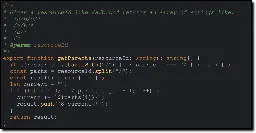
In the few months since Amazon CodeWhisperer became generally available, many customers have used it to simplify and streamline the way they develop software. CodeWhisperer uses generative AI powered by a foundational model to understand the semantics and context of your code and provide relevant and useful suggestions. It can help build applications faster and more securely, and it can help at different levels, from small suggestions to writing full functions and unit tests that help decompose a complex problem into simpler tasks.
Imagine you want to improve your code test coverage or implement a fine-grained authorization model for your application. As you begin writing your code, CodeWhisperer is there, working alongside you. It understands your comments and existing code, providing real-time suggestions that can range from snippets to entire functions or classes. This immediate assistance adapts to your flow, reducing the need for context-switching to search for solutions or syntax tips. Using a code companion can enhance focus and productivity during the development process.
When you encounter an unfamiliar API, CodeWhisperer accelerates your work by offering relevant code suggestions. In addition, CodeWhisperer offers a comprehensive code scanning feature that can detect elusive vulnerabilities and provide suggestions to rectify them. This aligns with best practices such as those outlined by the Open Worldwide Application Security Project (OWASP). This makes coding not just more efficient, but also more secure and with an increased assurance in the quality of your work.
CodeWhisperer can also flag code suggestions that resemble open-source training data, and flag and remove problematic code that might be considered biased or unfair. It provides you with the associated open-source project’s repository URL and license, making it easier for you to review them and add attribution where necessary.
Here are a few examples of CodeWhisperer in action that span different areas of software development, from prototyping and onboarding to data analytics and permissions management.
CodeWhisperer Speeds Up Prototyping and Onboarding One customer using CodeWhisperer in an interesting way is BUILDSTR, a consultancy that provides cloud engineering services focused on platform development and modernization. They use Node.js and Python in the backend and mainly React in the frontend.
I talked with Kyle Hines, co-founder of BUILDSTR, who said, “leveraging CodeWhisperer across different types of development projects for different customers, we’ve seen a huge impact in prototyping. For example, we are impressed by how quickly we are able to create templates for AWS Lambda functions interacting with other AWS services such as Amazon DynamoDB.” Kyle said their prototyping now takes 40% less time, and they noticed a reduction of more than 50% in the number of vulnerabilities present in customer environments.
Kyle added, “Because hiring and developing new talent is a perpetual process for consultancies, we leveraged CodeWhisperer for onboarding new developers and it helps BUILDSTR Academy reduce the time and complexity for onboarding by more than 20%.”
CodeWhisperer for Exploratory Data Analysis Wendy Wong is a business performance analyst building data pipelines at Service NSW and agile projects in AI. For her contributions to the community, she’s also an AWS Data Hero. She says Amazon CodeWhisperer has significantly accelerated her exploratory data analysis process, when she is analyzing a dataset to get a summary of its main characteristics using statistics and visualization tools.
She finds CodeWhisperer to be a swift, user-friendly, and dependable coding companion that accurately infers her intent with each line of code she crafts, and ultimately aids in the enhancement of her code quality through its best practice suggestions.
“Using CodeWhisperer, building code feels so much easier when I don’t have to remember every detail as it will accurately autocomplete my code and comments,” she shared. “Earlier, it would take me 15 minutes to set up data preparation pre-processing tasks, but now I’m ready to go in 5 minutes.”
Wendy says she has gained efficiency by delegating these repetitive tasks to CodeWhisperer, and she wrote a series of articles to explain how to use it to simplify exploratory data analysis.
Another tool used to explore data sets is SQL. Wendy is looking into how CodeWhisperer can help data engineers who are not SQL experts. For instance, she noticed they can just ask to “write multiple joins” or “write a subquery” to quickly get the correct syntax to use.
CodeWhisperer Accelerates Testing and Other Daily Tasks I had the opportunity to spend some time with software engineers in the AWS Developer Relations Platform team. That’s the team that, among other things, builds and operates the community.aws website.
Nikitha Tejpal’s work primarily revolves around TypeScript, and CodeWhisperer aids her coding process by offering effective autocomplete suggestions that come up as she types. She said she specifically likes the way CodeWhisperer helps with unit tests.
“I can now focus on writing the positive tests, and then use a comment to have CodeWhisperer suggest negative tests for the same code,” she says. “In this way, I can write unit tests in 40% less time.”
Her colleague, Carlos Aller Estévez, relies on CodeWhisperer’s autocomplete feature to provide him with suggestions for a line or two to supplement his existing code, which he accepts or ignores based on his own discretion. Other times, he proactively leverages the predictive abilities of CodeWhisperer to write code for him. “If I want explicitly to get CodeWhisperer to code for me, I write a method signature with a comment describing what I want, and I wait for the autocomplete,” he explained.
For instance, when Carlos’s objective was to check if a user had permissions on a given path or any of its parent paths, CodeWhisperer provided a neat solution for part of the problem based on Carlos’s method signature and comment. The generated code checks the parent directories of a given resource, then creates a list of all possible parent paths. Carlos then implemented a simple permission check over each path to complete the implementation.
“CodeWhisperer helps with algorithms and implementation details so that I have more time to think about the big picture, such as business requirements, and create better solutions,” he added.
CodeWhisperer is a Multilingual Team Player CodeWhisperer is polyglot, supporting code generation for 15 programming languages: Python, Java, JavaScript, TypeScript, C#, Go, Rust, PHP, Ruby, Kotlin, C, C++, Shell scripting, SQL, and Scala.
CodeWhisperer is also a team player. In addition to Visual Studio (VS) Code and the JetBrains family of IDEs (including IntelliJ, PyCharm, GoLand, CLion, PhpStorm, RubyMine, Rider, WebStorm, and DataGrip), CodeWhisperer is also available for JupyterLab, in AWS Cloud9, in the AWS Lambda console, and in Amazon SageMaker Studio.
At AWS, we are committed to helping our customers transform responsible AI from theory into practice by investing to build new services to meet the needs of our customers and make it easier for them to identify and mitigate bias, improve explainability, and help keep data private and secure.
You can use Amazon CodeWhisperer for free in the Individual Tier. See CodeWhisperer pricing for more information. To get started, follow these steps.
— Danilo
-
AI for business leaders: Discover AI advantages in this Microsoft AI learning series
azure.microsoft.com Microsoft AI Learn series: Advantages of AI for business leaders | Azure Blog | Microsoft AzureAs a leader in all things AI, Microsoft has spearheaded a curriculum created especially for you and your colleagues to help you build the knowledge, insights, and skills needed to make the most of AI technologies. Transform Your Business with Microsoft AI is designed to bridge the gap between AI tec...
AI is becoming a game-changer for businesses across industries and is ushering in a transformative era of innovation, efficiency, and unprecedented possibilities. With AI continuing to automate and optimize vast swaths of the economy, it’s become table stakes for executives and other business decision-makers (BDMs) to understand the latest developments. As a leader in all things AI, Microsoft has spearheaded a curriculum created especially for you and your colleagues to help you build the knowledge, insights, and skills needed to make the most of AI technologies.1 No matter your level of technical know-how, this comprehensive AI educational series spans vertical and horizontal topics focused on outcomes to help your organization extract the many benefits AI offers: Explore the competitive advantage of AI and how it offers improved decision-making, efficiency, and productivity. Learn about the potential of AI and what you need to make informed decisions about its adoption and implementation. Discover real-world examples from the Microsoft AI journey. Get guidance and best practices from Microsoft experts and other industry leaders. Introducing the Transform Your Business with Microsoft AI educational series Transform Your Business with Microsoft AI is designed to bridge the gap between AI technology and business strategy. It helps BDMs understand the potential of AI and equips them with the necessary insights to make informed decisions about AI adoption and implementation. It caters to individuals responsible for shaping AI strategy, managing AI projects, and driving digital transformation within their organizations. Our curriculum is divided into several modules, each addressing a specific area of AI implementation. Topics include AI strategy, culture, responsible AI, ethics, organizational change management, data-driven decision-making, and AI transformation in specific industries. Modules are presented in a variety of learning formats to accommodate different learning preferences and schedules. These include self-paced online courses, immersive workshops, case studies, snackable videos and articles, and more. Participants will get insight into real-world examples from the Microsoft AI journey, showcasing how AI technologies have been applied successfully across various business domains. In addition, we bring together experts from Microsoft, as well as industry leaders and AI practitioners, to provide guidance and share best practices. You’ll hear from experienced professionals who have implemented AI in real-world scenarios, offering valuable perspectives and lessons learned. How companies are using AI to increase efficiency and customer service Many companies across industries have already begun realizing the value of engaging not only with AI but with the AI experts and solutions at Microsoft. H&R Block uses AI and Microsoft tools to improve customer experience and the accuracy and efficiency of its tax preparation services. They use Azure Form Recognizer to extract data from tax documents automatically, which saves time and reduces errors. Azure Cognitive Search makes it easier for tax professionals to find the information they need, and Azure Machine Learning models help better predict and minimize the likelihood of audits for their clients. An AI chatbot created by Azure Bot Service can answer customer questions every day so customers can get help with their taxes at any time. Construction company Strabag SE also employs Microsoft AI solutions to improve efficiency and reduce risk. They use Microsoft Azure Active Directory to provide single sign-on access to their employees, and Azure Synapse Analytics, Azure Databricks, Azure Machine Learning, and Azure SQL to build data-driven insights. This has helped them to improve their project planning, risk management, and cost control. In addition, Strabag SE utilizes AI to predict the likelihood of project delays, identify potential safety hazards on construction sites, and optimize their supply chain, so that they can get the materials they need when they need them while controlling costs. H&R Block and Strabag SE are just two examples of how AI and Microsoft tools are being used to improve financial outcomes for companies across different industries. As AI technology continues to develop, we can expect to see even more innovative ways to use AI to increase efficiency, planning, customer service, safety, and more. Stay on the cutting edge of AI advancements Just as the launch of ChatGPT has created excitement and awareness of AI within the consumer sphere, ongoing advancements in large language models and generative AI has created an urgency to get AI deployed across organizations at a faster pace. As the technology continues to evolve, we’ll help you stay on the cutting edge by providing updates on the latest developments, emerging trends, and evolving best practices through additional resources and community engagement. With an emphasis on responsible AI, including ethics, fairness, transparency, and accountability, this learning path aims to empower organizations of all sizes—from startups to large enterprises—to harness the potential of AI. Transform Your Business with Microsoft AI is accessible globally, allowing business leaders from around the world to benefit from its educational resources. It aims to empower organizations of all sizes, ranging from startups to large enterprises, to harness the potential of AI and drive innovation. AI has the potential to reshape the business world in profound ways, ushering in a transformative era of innovation, efficiency, and unprecedented possibilities. With its ability to process vast amounts of data, learn from patterns, and make autonomous decisions, AI has the power to change how businesses operate, compete, and create value. By taking part in Transform Your Business with Microsoft AI, business leaders can arm themselves with the knowledge, insights, and skills needed to leverage AI technologies strategically. Discover more For more information and to begin your journey, visit the Microsoft Learn homepage. 1 Microsoft is a Leader in the 2023 Gartner® Magic Quadrant™ for Cloud AI Developer Services, June 8, 2023. The post AI for business leaders: Discover AI advantages in this Microsoft AI learning series appeared first on Azure Blog.
-
Microsoft Cost Management updates—June 2023
azure.microsoft.com Microsoft Cost Management updates—June 2023 | Azure Blog | Microsoft AzureWe're always looking for ways to learn more about your challenges and how Microsoft Cost Management can help you better understand where you're accruing costs in the cloud, identify and prevent bad spending patterns, and optimize costs to empower you to do more with less. Learn more.
Whether you’re a new student, a thriving startup, or the largest enterprise, you have financial constraints, and you need to know what you’re spending, where it’s being spent, and how to plan for the future. Nobody wants a surprise when it comes to the bill, and this is where Microsoft Cost Management comes in. We’re always looking for ways to learn more about your challenges and how Microsoft Cost Management can help you better understand where you’re accruing costs in the cloud, identify and prevent bad spending patterns, and optimize costs to empower you to do more with less. Here are a few of the latest improvements and updates based on your feedback: Reservation utilization alerts. Updates for Azure pricing pages. Help shape the future of cost reporting. What’s new in Cost Management Labs. New ways to save money with Microsoft Cloud. New videos and learning opportunities. Documentation updates. Let us dig into the details. Reservation utilization alerts Organizations are always looking for ways to optimize their cloud spend and make the most of their investments. So, maximizing the usage of purchased reservations is on top of mind for many of our customers. In cost management, you have always had the ability to view and monitor reservation utilization percentages. With the recently launched preview of reservation utilization alerts, now you can also get email notifications when any of your selected reservations are below your configured threshold value for utilization. Getting started is easy, go to cost alerts and create an alert rule of type ‘reservation utilization’. You may already be familiar with this experience if you have configured alerts for anomalies in your subscriptions. Reservation utilization alerts can be created at the Billing account (EA), Billing profile (MCA), and Customer (MPA) scopes. To learn more, please see Reservation utilization alerts—preview. Updates for Azure pricing pages June 2023 has seen many improvements and new prices added to our Azure pricing experiences, and we’re excited to share them with you. These changes will help make it easier for you to estimate the costs of your solutions. The Virtual Machines Selector tool has been improved to help customers find the closest matching virtual machine to their technical requirements, making it easier to estimate costs for various Azure products. We have launched pricing details for a new service, Azure AI Content Safety, which detects harmful user-generated and AI-generated content in applications and services. Our Cognitive Services have seen many changes, including new custom summarization and custom sentiment detection offers on Language Service, a new Vision Florence feature “Shelf Analysis” on Computer Vision, and new pricing for Disconnected Containers Commitment tier across Language Service, Translator Service, Language Understanding, and Speech Services. These updates will make it easier for customers to estimate costs for AI solutions. Many new offers have been added across Virtual Machines (new NG Series and Dlsv5 went generally available), Block Blobs and Azure Data Lake Storage (Cold Tier pricing estimation added to the calculator), Form recognizer (updated calculator and pricing page with new “read” commitment tier and new PAYG offers), Data Explorer (simplified and added new SKUs to the pricing page), Azure Container Instances (introduced spot containers pricing in public preview), Azure NetApp Files (added pricing for the new Double encryption offer), Azure Monitor (updated pricing on SMS and Voice Call offers), and Azure Communication Services (added estimation for the call recording offer to the calculator). These updates will provide customers with more options and flexibility when estimating costs for different Azure services. We’re constantly working to improve our pricing tools and make them more accessible and user-friendly. We hope these updates will make it easier for customers to estimate costs and choose the right Azure services for their needs. If you have any feedback or suggestions for future improvements, please let us know! Help shape the future of cost reporting Do you report on or manage costs for your team or organization? Do you need to group and organize costs across multiple subscriptions, resource groups, or billing accounts? We are exploring new capabilities to improve cost allocation and would love to get your feedback in a brief, 10-minute survey. Please share this with others within your organization. We are looking for as much feedback as we can get to address one of the most common pain points we hear about from large teams and organizations. What’s new in Cost Management Labs With Cost Management Labs, you get a sneak peek at what’s coming in Microsoft Cost Management and can engage directly with us to share feedback and help us better understand how you use the service, so we can deliver more tuned and optimized experiences. Here are a few features you can see in Cost Management Labs: New: Anomaly and reservation utilization alert rules—Now enabled by default in Labs. Manage anomaly and reservation utilization alerts from the new Alert rules page. Anomaly detection alerts are available for all subscriptions and reservation utilization alerts are available for Enterprise Agreement billing accounts and Microsoft Customer Agreement billing profiles. You can enable the Alert rules page in Cost Management from the Try preview menu. New: Drill down in Cost analysis smart views—Now enabled by default in Labs. Drill into your cost data with one click using Cost analysis smart views. You can drill into a row to view the full details, view related resources from the context menu (three dots), open the resource to manage it from the Go to menu, remove filters using the Customize command, and use the Back command to undo a change. You can enable this option from the Try preview menu. New: Streamlined Cost Management menu. Organize Cost Management tools into related sections for reporting, monitoring, optimization, and configuration settings. You can enable this option from the Try preview menu. Merge cost analysis menu items. Only show one cost analysis item in the Cost Management menu. All classic and saved views are one-click away, making them easier than ever to find and access. You can enable this option from the Try preview menu. Recommendations view. View a summary of cost recommendations that help you optimize your Azure resources in the cost analysis preview. You can opt in using the Try preview menu. Forecast in the cost analysis preview. Show your forecast cost for the period at the top of the cost analysis preview. You can opt in using Try preview. Group related resources in the cost analysis preview. Group related resources, like disks under virtual machines or web apps under App Service plans, by adding a “cm-resource-parent” tag to the child resources with a value of the parent resource ID. Charts in the cost analysis preview. View your daily or monthly cost over time in the cost analysis preview. You can opt in using Try Preview. View cost for your resources. The cost for your resources is one click away from the resource overview in the preview portal. Just click View cost to quickly jump to the cost of that resource. Change scope from the menu. Change scope from the menu for quicker navigation. You can opt-in using Try Preview. Of course, that’s not all. Every change in Microsoft Cost Management is available in Cost Management Labs a week before it’s in the full Azure portal or Microsoft 365 admin center. We’re eager to hear your thoughts and understand what you’d like to see next. What are you waiting for? Try Cost Management Labs today. New ways to save money in the Microsoft Cloud Here are new and updated offers you might be interested in: Azure HX Virtual Machines for HPC. Azure HBv4 Virtual Machines for HPC. Azure Stream Analytics is launching a new competitive pricing model. Azure Monitor managed service for Prometheus. Cost-optimizations with transformations on Log Analytics for troubleshooting Cosmos DB. Azure Front Door upgrade from standard to premium. Reduced pricing for Azure Video Indexer. Zone Redundant Storage for Azure Disks is now available in Japan East and Korea Central. Preview: NGads V620 Series VMs optimized for cloud gaming. Preview: Red Hat Enterprise Linux (RHEL) 9.2 support for AMD confidential VMs. Preview: Azure Container Instances(ACI) Spot containers. Preview: Azure Front Door Standard/Premium in Azure Government. Preview: Azure Chaos Studio is now available in West US 2 region. New videos and learning opportunities Here is a new video you may be interested in: Jellyfish Pictures ramps up VFX rendering while reducing costs by 80 percent (~2 minutes). Follow the Microsoft Cost Management YouTube channel to stay in the loop with new videos as they’re released and let us know what you’d like to see next. Want a more guided experience? Start with Control Azure spending and manage bills with Microsoft Cost Management. Documentation updates Here are a few documentation updates you might be interested in: Newly updated menu in the Cost Management documentation. Updated: Create and manage budgets—Added details about push notifications. New: Published Reservation utilization alerts article. New: Published Copy billing roles from one MCA to another MCA across tenants with a script billing article. New: Published Access your EA billing account in the Azure Government portal Azure Government article. 9 updates based on your feedback. Want to keep an eye on all documentation updates? Check out the Cost Management and Billing documentation change history in the azure-docs repository on GitHub. If you see something missing, select Edit at the top of the document and submit a quick pull request. You can also submit a GitHub issue. We welcome and appreciate all contributions! What’s next? These are just a few of the big updates from last month. Don’t forget to check out the previous Microsoft Cost Management updates. We’re always listening and making constant improvements based on your feedback, so please keep the feedback coming. Follow @MSCostMgmt on Twitter and subscribe to the YouTube channel for updates, tips, and tricks. You can also share ideas and vote up others in the Cost Management feedback forum or join the research panel to participate in a future study and help shape the future of Microsoft Cost Management. Best wishes from the Microsoft Cost Management team. Stay safe and stay healthy. The post Microsoft Cost Management updates—June 2023 appeared first on Azure Blog.
- blog.google 13 tips to help you start running in 2023
Use Google Maps, Workspace, Fitbit and Pixel to hit your running goals in 2023.
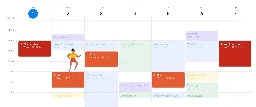
Use Google Maps, Workspace, Fitbit and Pixel to hit your running goals in 2023.
Illustration of a Google Calendar with a handful of days marked “run.” There is a small, cartoon character running across the calendar.
- blog.google The next generation of AI for developers and Google Workspace
Introducing new generative AI capabilities in Google Cloud and Google Workspace, plus PaLM API and MakerSuite for developers.
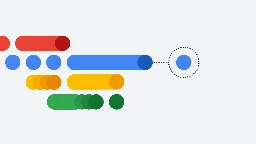
Introducing new generative AI capabilities in Google Cloud and Google Workspace, plus PaLM API and MakerSuite for developers.
Moving lines and dots in the 4 Google colors
- blog.google New Google for Education tools for how you teach, learn and manage
Today at ISTE, we’re introducing new tools in Google Workspace for Education and Chromebooks.

Today at ISTE, we’re introducing new tools in Google Workspace for Education and Chromebooks.
Graphic of product launches with colorful drawings
- blog.google Google Docs can make a table of contents for you — here’s how
Add a table of contents to any Google Doc in a few simple steps.

Add a table of contents to any Google Doc in a few simple steps.
An abstract illustration of long rectangular blocks, some of which are shaded, some of which are next to the numbers “1, 2, 3.” There is a Google Docs icon in a circle in the illustration.
- blog.google 12 tips to help you read more books this year
Use different features from Google Books, Google Play, Android and more to read more books this year.

Use different features from Google Books, Google Play, Android and more to read more books this year.
Illustration of books, a Pixel phone, a tablet, headphones, a lamp and a cup of coffee on a desk.
- blog.google 16 tips to help you be more focused and organized at work
Here are the tips one Googler uses to stay more focused and organized at work using Calendar, Chrome, Assistant and other tools.
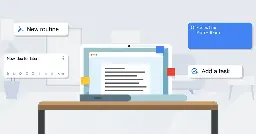
Here are the tips one Googler uses to stay more focused and organized at work using Calendar, Chrome, Assistant and other tools.
Illustration of laptop on desk surrounded by pop-ups, including a Calendar notification for focus time and an "Add a task" prompt
- blog.google How to find Noto in Google Docs, Slides, Sheets and Sites
The Noto fonts in Google Workspace now support almost all living written languages

The Noto fonts in Google Workspace now support almost all living written languages
A screen with Noto fonts
- blog.google New teaching and learning features in Google Workspace for Education
Check out Google Workspace for Education’s new teaching and learning features in Google Classroom, Docs, Slides, Meet and more.

Check out Google Workspace for Education’s new teaching and learning features in Google Classroom, Docs, Slides, Meet and more.
Illustration of a teacher gesturing toward a laptop. Various illustrations pop out of the laptop, including a video call, a stopwatch and a checkmark.
- blog.google 5 ways I’m using Google Slides to redecorate my living room
These Google Slides tips can make room design that much easier.

These Google Slides tips can make room design that much easier.
Illustration of living room with large hand placing a chair into the furniture arrangement
- blog.google 7 new Google Chat features to easily message friends and family
Check out new features that make it easier to message in Google Chat, like read receipts and message deletion.

Check out new features that make it easier to message in Google Chat, like read receipts and message deletion.
A Google Chat group titled “Gary’s Surprise 50th Potluck” shows messages from Ann Gray and Lori Cole. In the background are party decorations like balloons and flags.
- blog.google How to undo send in Gmail for up to 30 seconds
You can recall an email on desktop or mobile in seconds with Gmail's Undo Send feature.

You can recall an email on desktop or mobile in seconds with Gmail's Undo Send feature.
Illustration of an email moving in and out of a mailbox
- blog.google New teaching and learning features in Google Workspace for Education
Check out Google Workspace for Education’s new teaching and learning features in Google Classroom, Drive, Meet and more.

Check out Google Workspace for Education’s new teaching and learning features in Google Classroom, Drive, Meet and more.
Illustration of a teacher gesturing toward a laptop. Various illustrations pop out of the laptop, including a graph and a check mark.
- blog.google 11 Google Docs tips I use every day to save time
These Google Docs tips can help with work, school or play.
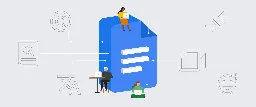
These Google Docs tips can help with work, school or play.
Illustrated figures of people working on laptops sitting on and next to a large Google Docs icon
- blog.google New features for safer learning with Google for Education
Google for Education puts the safety, security and privacy needs of our users first, with new controls for Google Workspace for Education and ChromeOS.

Google for Education puts the safety, security and privacy needs of our users first, with new controls for Google Workspace for Education and ChromeOS.
Sketch of a shield with a school in the middle, with icons representing safety
- blog.google New tools for more collaborative, personal and accessible learning
At Bett 2023, we’re sharing our vision for the future of education, announcing new updates around Google Workspace, Chromebooks and Chrome, and discussing advances in AI and privacy and security.
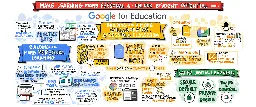
At Bett 2023, we’re sharing our vision for the future of education, announcing new updates around Google Workspace, Chromebooks and Chrome, and discussing advances in AI…
Digital sketch of several icons and metaphors that represent the new Google for Education launches
- blog.google I’m using Google Docs to write a novel — steal my tips
Here are my tips for writing a novel in Google Docs, from formatting advice to accountability tools and beyond.

Here are my tips for writing a novel in Google Docs, from formatting advice to accountability tools and beyond.
A blonde woman working on a desktop computer with a Google Doc open titled “My Book.”
- blog.google The background on Google Meet backgrounds
The inside story of how the Google Meet team progressed background options from blur all the way to animated filters.

The inside story of how the Google Meet team progressed background options from blur all the way to animated filters.
A collage of different Meet backgrounds, including a lantern-filled street, an illustrated sky with clouds and field of flowers with a modern metal structure over it. In the center of the collage is a Google Meet icon.
- blog.google Explore our new Google for Education App Hub
We’re announcing new Google for Education updates at ISTE, North America’s biggest edtech conference.

We’re announcing new Google for Education updates at ISTE, North America’s biggest edtech conference.
Image of the Google for Education App Hub website, with app icons swirling around text that reads “The power of great apps and Google”
- blog.google 3 Google tools to help you save money in 2023
Google tools that can help you save more money in 2023.

Google tools that can help you save more money in 2023.
Illustration of various Google product features in a collage together. One shows a “track prices” bubble next to airplanes, another shows a row of coffee makers with one marked “sale” and the third image shows a Google Sheet budget tracking template.
- blog.google 8 ways Google tools help me care for my pets
Use Google tools like Maps, Docs and Photos to make caring for your pet easier.

Use Google tools like Maps, Docs and Photos to make caring for your pet easier.
Illustration of an overhead angle of a desk. On it is a tablet and a phone, both with images of a dog on them. There’s also another tablet showing a Google Doc with a list of items on it, like a pair of Pixel Buds, a cup of coffee, some photos of a dog.
-
How Microsoft Cloud is embracing FinOps practitioners
azure.microsoft.com How Microsoft Cloud is embracing FinOps practitioners | Azure Blog | Microsoft AzureMicrosoft Azure is helping FinOps practitioners optimize cost and empower organizations with a host of exciting learning resources. Learn more.
In February 2023, I announced that Microsoft joined the FinOps Foundation as a premier member and outlined five areas we planned to explore and invest in: Defining specifications and evolving best practices. Aligning our collective guidance. Improving our products and services. Advancing training and certification programs. Engaging with the community. We’ve been busy over the past four months and with FinOps being top of mind as several of us land in San Diego for the second annual FinOps X conference that’s kicking off later today, I wanted to share some of that progress with you.
Helping FinOps practitioners learn and grow While we’ve been dedicated to helping people manage and optimize their costs for years, this month is especially pivotal for FinOps practitioners managing costs in Microsoft Cloud. First up is a new FinOps solutions page to help centralize the various resources available today and in the future. Whether you’re new to FinOps or you have years of experience, this page will connect you to Microsoft solutions that can empower your organization to efficiently adopt FinOps best practices.
One of the resources you’ll find on the FinOps solutions page is a new FinOps with Azure e-book. This 20-page e-book is a great resource for those new to FinOps in Azure. The e-book will guide you through the FinOps principles to highlight Microsoft solutions that can support your cloud journey and help your organization maximize the cloud business value. When you’re ready to dig into the next level of detail and start your FinOps journey, check out the new FinOps documentation. If you’re new, you’ll get an introduction to FinOps and the FinOps Framework with a guide for how to approach each iteration through the FinOps lifecycle. And whether you’re new or experienced, you’ll also find guides that help you understand and implement each capability in Azure. You’ll also find newly updated Microsoft Cost Management documentation, which has been reorganized to help you navigate and find related guidance quicker and easier than ever. Whether you’re looking for reporting and analytics, monitoring, optimization, cost allocation, or automation and extensibility, everything you need to implement your FinOps capabilities in Microsoft Cost Management has been restructured for ease of use. These same changes are also coming to the Azure Portal, where you’ll find a new Cost Management menu that organizes capabilities into these same groups, again making it easier than ever to navigate to the capabilities you need to drive your FinOps practice.
Enable the new streamlined menu yourself from try preview in Cost Management and let us know what you’d like to see next.
Helping FinOps practitioners get answers faster Everyone loves new guidance that teaches you how to solve complex problems or streamline how you work, but why stop there? Just like documentation can guide your learning experience, our vision of Cost Management is to guide you through your data, helping you discover deeper insights into costs and deliver answers quicker than ever before. This starts with significant performance improvements within the Cost analysis experience. Many have already noticed considerably faster load times over the last few months. Expect to see even more improvements in the coming months. Beyond performance, you may have also noticed some major improvements to the new Cost analysis experience. Everyone’s familiar with the customizable charts in Cost analysis, but many are still new to smart views in Cost analysis. Smart views add intelligent insights about your costs like anomaly detection, more flexible download options, and the ability to multi-task and explore multiple perspectives of your cost at the same time. You can take a quick peek into cost details by expanding any row—and now, for the first time, you can also drill down into cost details with one click. Drill down in smart views improves the classic filtering in customizable views by allowing you to drill into the data you’re looking at without needing to manually look up values in a filter on the side of the page, which interrupts your flow. Simply click the item you’re interested in, and you’ll switch to a view that gives you the next level of detail. Or perhaps you’re interested in related costs. Select the context menu (three dots) next to the name and choose from the related attributes to find resources of the same type or in the same resource group, for instance. And if you need to manage the resource, simply select Go to > Resource from the menu. After you’ve drilled into your costs, you can select the Customize command at the top to remove filters or simply select the Back command on that view to undo the last change. Enable drill down yourself from try preview in Cost Management and let us know what you’d like to see next.
Looking forward, smart views will also provide quick access to your Cost Management AI assistant. The assistant will help you perform quick analyses, provide insights, and offer recommendations to better understand, analyze, manage, and forecast your cloud costs. But whether you use smart views or customizable views, the new Cost analysis experience remembers what you used and offers quick access to views you used recently or pinned to the top of the list. Soon, you’ll also see support for customizable views directly within the tabbed experience, making it easier to switch between your customizable, saved, and smart views.
Helping FinOps practitioners scale their efforts Many practitioners can meet their basic needs with the native Cost Management experiences in the Azure Portal, but there are times when you need more. Maybe you’re looking to automate onboarding and setup. Or perhaps you need more advanced reporting merged with business data. Or maybe you have a more complex cost allocation or chargeback strategy that requires integrating with other systems. Whatever your scenario is, the FinOps toolkit open-source project seeks to offer solutions that help you automate and extend native cloud capabilities to meet the common needs of the FinOps community. The toolkit is an exploratory community-driven project with contributors across the globe and includes learnings from Microsoft architects and engineers in the field to help you get off the ground quicker with: Starter kits that help you get started with cost management and optimization. Automation scripts to streamline cost configuration and management at scale. Advanced solutions to facilitate building custom solutions. As an example, many people who discover Cost Management scheduled alerts or anomaly detection are immediately interested in automating setup across all subscriptions. To streamline automation, we contributed code to the FinOps toolkit and published the bicep modules for scheduled actions in the official Bicep Registry. Whether you’re creating a scheduled alert for a resource group or a subscription cost anomaly alert, adding a reference to the Bicep Registry module is quick and easy:
Looking beyond automation, another example is when organizations want to build custom reporting or optimization solutions. Custom solutions always start with data ingestion, but most organizations don’t realize the complexities introduced by nuances within different billing systems or managing data at scale. The FinOps toolkit includes a data pipeline code sample that ingests cost data into a central data store and includes pre-built Power BI reports to get you started quickly. The solution was designed and implemented by Brett Wilson (Principal Cloud Solution Architect) and Anthony Romano (Senior Consultant) to enable faster, more reliable reporting against multiple billing accounts, subscriptions, and resource groups and normalizes cost data to the FinOps Open Cost and Usage Specification (FOCUS) schema.
If you’re not familiar with FOCUS, it’s an open specification for billing data that we’re leading with the FinOps Foundation. We’re partnering with many practitioners, vendors, and cloud providers to deliver a draft specification we can all adopt. You’ll hear more about this at FinOps X this week. There’s a lot to cover, so I’ll share more details in a future blog post. Stay tuned for more updates about the FinOps toolkit. There are many solutions the community would like to share and we’re always eager to hear from you about what you’d like to see next.
Helping FinOps practitioners drive efficiency We’re always looking for ways to help organizations optimize their cloud usage and rates to drive efficiencies that ultimately result in more business value. (This focus on business value might be my favorite aspect of FinOps.) And as the heart of all optimization in Azure, you’ll usually see these show up in Azure Advisor first, like the ability to customize the lookback period for right-sizing recommendations, which gives you more flexibility to improve the accuracy of cost recommendations, or the ability to automate cost savings with Resource Graph.
But also keep in mind that not all optimization and efficiency opportunities are ahead of us—some are behind us. As FinOps practitioners, you’re of course aware of commitment-based discounts, like reservations and savings plans. It’s perhaps the most discussed way to optimize your costs by committing to specific usage or spending thresholds. But one part of that story that sometimes goes untold is monitoring your reservations. You can now configure reservation utilization alerts in Cost Management to stay informed when your reservation utilization drops below an acceptable threshold. You can configure reservation utilization and anomaly alerts from the new alert rules page in Cost Management.
And last, but not least, I’d like to share a solution that saves you time as well as money! As part of the FinOps toolkit, you also have a new cost optimization workbook that centralizes some of the most used tools to help you drive your utilization and efficiency goals, like Advisor recommendations, Hybrid Benefit, and more. The cost optimization workbook was designed and implemented by Arthur Clares (Senior Cloud Solution Architect) and Seif Bassem (Senior Cloud Solution Architect) and is based on the Well-Architected Framework and feedback we’ve heard from working directly with organizations driving their own FinOps practices.
What’s Next for FinOps? I’ve just walked you through a sampling of the things we’ve been working on since joining the FinOps Foundation earlier this year. This is only a taste of what’s to come. Looking ahead, you can expect to see: Even more FinOps learning resources along with more comprehensive documentation that helps you drive FinOps maturity. Our portal experiences will continue to improve as we integrate more intelligent systems that surface insights more naturally and streamline your workflow. We’ll continue to evolve and expand the FinOps toolkit to cover more scenarios, like FOCUS adoption, in collaboration with the open-source community. New and updated tools and services that help you save money and drive efficiency with Microsoft Cloud. And, if you’re at FinOps X this week, please catch us in our sessions where we’ll share tips on how to manage cost data at scale on Wednesday and how to implement FinOps capabilities in the Microsoft Cloud on Thursday. We’ll also be in the FOCUS and Technical Advisory Council sessions as well as at our booth! We look forward to catching you there or in the FinOps Slack community! And if that wasn’t enough, here’s one last tip: Stay informed with all FinOps updates with the new FinOps tag on the Azure blog! All the best from your friendly FinOps ambassadors at Microsoft! The post How Microsoft Cloud is embracing FinOps practitioners appeared first on Azure Blog.
-
Supercharge your skills with Microsoft CLX tracks for Azure
azure.microsoft.com Supercharge your skills with Microsoft CLX tracks for Azure | Azure Blog | Microsoft AzureEnhance your Azure networking, Microsoft Sentinel, and Windows Server migration skills today with Connected Learning Experience. Learn More.
The Microsoft Azure Connected Learning Experience (CLX) program is expanding with three new tracks for Azure professionals. Enhance your Azure networking, Microsoft Sentinel in Azure, and Windows Server migration skills your way with these personalized and self-paced courses that help you learn on your own time as efficiently and effectively as possible. At the end of each course, you’ll walk away with the knowledge and skills to boost your cloud computing career. What are the new tracks? With data volumes growing every year, it’s never been more important to make sure that your Microsoft Azure systems are connected and secure—and that’s why our new CLX tracks are designed to strengthen your Azure Networking, Windows Server migration, and Microsoft Sentinel in Azure skills. From mitigating threats with Sentinel to managing your Windows Server workloads on Azure to uncovering new insights with a connected suite of Azure resources, our new CLX tracks can help you learn the fundamentals of cloud-native security and Azure connectivity so you can protect and connect your mission-critical systems.
New course AttendeesCourse content
AZ-700: Designing and Implementing Microsoft Azure Networking Solutions Azure network engineersLearn how to design and implement a secure network infrastructure in Azure and how to establish hybrid connectivity, routing, private access to Azure services, and monitoring in Azure. In this course, you’ll learn the ins and outs of Azure networking. Practice designing and implementing core networking infrastructure, application delivery services, and private access to Azure services, and design, implement, and manage connectivity services. You’ll also learn to secure network connectivity to Azure resources—and though this course is meant for Azure network engineers, anyone with an interest in Azure networking can enroll. MS-Sentinel: Mitigate threats using Microsoft Sentinel in Azure (Part of SC-200) *Note: This track is not a certification course, but instead is a part of the SC-200 course. Because of this, learners are not eligible to receive a Microsoft certification exam voucher for completing this track.Security Analyst Threat Intelligence Analyst Incident Responder Security Engineer Security Operations Center (SOC) ManagerIn this course, you’ll learn to protect your organization against threats with Microsoft Sentinel, a cloud-native Security Information and Event Management (SIEM) and Security Orchestration, Automation, and Response (SOAR) solution. You’ll practice leveraging Sentinel’s capabilities to identify and respond to threats in real time by designing and configuring a Sentinel workspace, managing Sentinel analytics rules and incidents, and much more. At the end of the course, you’ll have gained the skills you need to effectively use Sentinel to mitigate threats and protect your organization’s most mission-critical resources. Migrate and manage Windows Server workloads on AzureSystem Administrator Azure Cloud Administrator Azure Cloud ConsultantMigrating and managing Windows Server workloads on Azure involves transferring existing applications and infrastructure from on-premises to the Azure cloud platform. Azure offers various tools and services, such as Azure Site Recovery, Azure Virtual Machines, Azure Backup, and Azure Monitor, to support this migration and management process. This allows organizations to leverage the benefits of cloud computing while still using their familiar Windows Server workloads.
What is the CLX program? The CLX program is a comprehensive, step-by-step learning program designed for IT professionals and other aspiring learners looking to master core concepts in cloud services. It combines self-paced interactive labs and skilling content with virtual sessions led by Microsoft tech experts to help learners like you strengthen their understanding of the latest cloud topics in a way that meets your needs and fits your schedule. The program’s unique design ensures you get exactly the skills you need as efficiently as possible, and it includes four steps: Knowledge Assessment The program kicks off with a 20-question Knowledge Assessment to gauge your skills. Based on your results, it will then present you with only the course content that’s relevant to your skills and knowledge gaps—making sure you use your time as efficiently as possible in a way that fits your experience. Interactive labs You’ll then dive into learning modules and hands-on, interactive online labs that mirror what you’ll experience in the professional world—helping you learn efficiently and effectively. The interactive labs are available on demand and can be used as many times as needed. Virtual session After finishing the interactive labs, you can choose to attend a virtual session led by Microsoft-certified trainers that dive deeply into the course content. Led by Microsoft-certified trainers (MCTs), these group sessions feature live discussions, insights, and practical guidance, and you can ask follow-up questions to get real-time help alongside peers and pros. To make sure you get the skills you need wherever you’re located, the two-to-four-hour sessions are held regularly in three time zones—Australian Easter Daylight Time (AEST), Greenwich Mean Time (GMT), and Pacific Daylight Time (PDT). Practice test At the end of your CLX journey, you’ll take an 80-question practice test that helps you assess your learning and prepare you for your final Microsoft certification exam. This two-hour test is very similar to the final exam, helping you accurately test your understanding and target areas for improvement. Once you’ve finished the program’s four steps, you’ll walk away with the knowledge and skills to help you excel in the world of Azure. You’ll also receive a 50% discount voucher for the Microsoft Azure Certification exam (this is a voucher only available with certain courses), so you can prove your skills and advance your cloud computing career. How can I sign up? Check out our Microsoft CloudEvents Portal and our Microsoft Azure CLX introductory video to learn more and sign up for the CLX program. You can also read about many other courses in CLX that are designed to boost your Azure skills in our previous blog, and you can check out our CLX AI in Azure skilling content here. The post Supercharge your skills with Microsoft CLX tracks for Azure appeared first on Azure Blog.
-
The economic benefits of innovating with Azure AI
azure.microsoft.com The economic benefits of innovating with Azure AI | Azure Blog | Microsoft AzureForrester’s Total Economic Impact™ study highlights the financial benefits of infusing AI with cutting-edge innovation from Azure AI services. Learn More.
At Microsoft Build this year our CEO Satya Nadella grounded the excitement surrounding AI back to one simple goal: to better serve unmet user needs. He asked “Why do we build software?” and, in doing so, he reminded us it’s not the technological capabilities of AI tools that make them so valuable, but instead where we apply them and for whom. Great products have always, and will always, be about people, and that’s what’s energizing us most on the Microsoft Azure team right now. Azure customers are already infusing AI in incredible ways, building next-gen app experiences with cutting-edge innovation from Azure AI services with the backing of Azure’s trusted cloud platform. CarMax, H&R Block, the NBA, and most recently announced, Mercedes-Benz are putting Azure AI to work to differentiate their respective businesses, and they’re proving how investments in innovation quickly pay themselves forward—even during a challenging economy. When AI-powered apps like the CarMax research tool help us scour online reviews of 4,500 car types in seconds, or NBA CourtOptix serves up insights behind our favorite players’ moves, we see first-hand how our own needs inspire truly remarkable software development. Even so, some customers that are ready to invest in AI tell us that they need help making the financial case for the tools they need to build great products. That’s why today we’re sharing a new Total Economic Impact™ (TEI) study conducted by Forrester Consulting, which captures the costs and benefits of innovating with Azure AI services over a three-year journey. The report analyzes not just one Azure AI service but the exponential effect of multiple. CarMax, for example, leverages a combination of Azure OpenAI’s Chat GPT, Azure Cognitive Search, and Azure Machine Learning Responsible AI dashboard to design their own data-driven AI solution. When you partner with Azure, you gain access to pre-trained large language models that are enterprise-ready and it’s exciting to see customers combine our products to create their own digital IP with the same building blocks Microsoft trusts for its products. Bring high-quality AI to market with fast ROI Grounded in a composite organization, trusted financial model, and interviews with decision-makers across five organizations, our new Forrester study shows how Azure AI services collectively resulted in a 284 percent return on investment. Forrester breaks this big number down into tangible value by category, calculating $12.6 million gains from business growth and $16.1 million gains in spending optimization. Impact of such magnitude doesn’t happen overnight, but it also happens a lot sooner than some organizations might think. With a well-architected cloud foundation, AI can be infused smoothly into all kinds of applications and start automating cumbersome processes fairly fast. In Forrester’s findings, Azure AI services showed potential payback in less than six months because Azure’s pre-trained models are so accurate and the services integrate well across other Azure and Microsoft Cloud products. Azure AI also offers turnkey services that unblock specific tasks even faster out of the box. Azure Form Recognizer, for example, continues to be incredibly popular because it was purposefully designed to make documents intelligent and searchable. In a single service, it brings together business logic, the orchestration of multiple AI skills, and a UI to support more nimble app deployment. Above is an executive summary from the Total Economic Impact of Microsoft Azure AI, a study conducted by Forrester Consulting and commissioned by Microsoft in April of 2023. Start small to move quickly and grow fast Creating space and resources for technological innovation has never been easy, but it’s what keeps companies competitive through economic headwinds. Lately, what’s been most interesting for me as a B2B marketer is watching my own friends and family members realize the possibilities of AI as we experiment with prompt engineering in the new Bing around a dinner table. It has struck me that AI isn’t in the background anymore; it’s very much at the forefront of how we think about tackling solutions through software and what we as humans expect from digital experiences. The transformative shift of generative AI has all industries reimagining their products and services. In Forrester’s study, Azure AI helped generate revenue from new products, and the value of these compounded in worth year-over-year, generating $3.1 million of revenue growth in year one, then $5.6 million in year two, and $6.9 million in year three. Well-calculated risks are the ones organizations can’t afford not to take, especially when they serve those unmet user needs. The qualitative interviews Forrester conducted for the study revealed a trend across the five different organizations who participated: using a planful pilot approach produces strong financial results. In aggregate, value was mapped from initial planning, model development, and training with just eight people to an expanded team of 40 data engineers and data scientists. The study itself essentially demonstrates what a startup mentality inside a large organization can do. One retail customer interviewed said something that just stuck with me as we look at the cash flow chart below, they said, “Before, we didn’t have maturity around ML (machine learning). Now that we do, we can move away from a subscription-based tool which is not cheap, and go to a consumption-based tool like Azure, where 100 percent of what we build is an asset [to our organization] …” That’s exactly what innovating with Azure is about: helping you build your own proprietary value in the cloud—unique solutions your competitors can’t buy. Above is a cash flow chart from the Total Economic Impact of Microsoft Azure AI, a study conducted by Forrester Consulting and commissioned by Microsoft in April of 2023. The AI adventure We often talk about technology as a journey, and in this journey, AI is what gives digital transformation a sense of adventure and purpose again. The cost savings and optimization of cloud computing will continue to fund the magic of AI. It’s all interconnected and when you partner with Azure to build and run AI, that’s how we’ll support your vision and your teams. Be sure to download the full Forrester study here and contact your Microsoft account team to learn more about how to get started with AI today. All you need is a great business idea. Learn more about Azure AI today. The post The economic benefits of innovating with Azure AI appeared first on Azure Blog.
-
Azure Data Manager for Energy and LogScope™: Enabling data integration within minutes
azure.microsoft.com Enabling data integration with Microsoft and LogScope™ | Azure Blog |This innovative solution provides seamless integration of borehole data into petrophysical and geological models, enabling users to view, filter, and deliver data to the OSDU™ Data Platform with ease. Learn more.
This post was co-authored by Nicholas Harvey, Chief Executive Officer, Harvey Rock Physics. Revolutionizing access to OSDU™ Log Data with LogScope™ Harvey Rock Physics (HRP) has revolutionized the way geoscientists and petrophysicists interact with well data, by integrating their LogScope™ software platform built on the Microsoft Cloud. This innovative solution provides seamless integration of borehole data into petrophysical and geological models, enabling users to view, filter, and deliver data to the OSDU™ Data Platform, such as Azure Data Manager for Energy with ease. Founded in 2011, HRP is a leader in petrophysical technologies, specializing in mobile solutions. The LogScope™ software is built on a modern code base that allows HRP to rapidly create modules to meet client needs. In this case, HRP created a module that allows efficient entry and graphical viewing of data in the OSDU™ Data Platform. The OSDU™ Data Platform provides flexible storage that is application-independent, allowing users to store data and use multiple applications in complex workflows. LogScope™ provides seamless interrogation through a map view that enables borehole-related data to be spatially visualized and selected for further inspection in a single well or cross-section mode. LogScope™ is designed to be readily accessible from the Microsoft Store, with versions available for Windows tablet computers, as well as Apple iPad and iPhone products. This software is developed on a modern code base, allowing HRP to quickly create modules to meet client needs. The LogScope™ application provides tight integration of borehole data into petrophysical and geological models.
Search and ingest data in minutes Download the application from the Microsoft Store or Apple App Store, install it on your device, enter your connection parameters, and you are up and running in minutes. You can search and ingest data from your mobile device. New-generation end users expect the installation and usage of applications to be as easy as downloading any application on their phones or tablets, however, the legacy applications are coming from the old world of IT and have a different user experience. With LogScope™ we are making deployment and usage of earth science applications as easy as a phone or tablet client. One of the major advantages of this new tool is the ability to upload or ingest data directly from raw data file formats—typically LAS or DLIS—or directly from data inside LogScope™️. Large data volumes can be intuitively and quickly uploaded to the OSDU™ Data Platform.
Overall, HRP’s LogScope™ software platform, powered by the Microsoft Cloud, provides an efficient and user-friendly way for geoscientists and petrophysicists to interact with well data. The innovative solution provides seamless integration of borehole data into petrophysical and geological models, enabling users to view, filter, and deliver data to the OSDU™ Data Platform with ease. How to work with HRP solutions on Azure Data Manager for Energy Azure Data Manager for Energy is an enterprise-grade, fully managed, OSDU™ Data Platform for the energy industry that is efficient, standardized, easy to deploy, and scalable for data management—ingesting, aggregating, storing, searching, and retrieving data. The platform will provide the scale, security, privacy, and compliance expected by our enterprise customers. The platform offers out-of-the-box compatibility with HRP LogScope, which accelerates time-to-market and being able to run their domain workflows with ease, with data contained in Azure Data Manager for Energy, and with minimal effort. Learn more The HRP LogScope™ application can be downloaded from the following: Microsoft Store Apple App Store for iPhone Apple App Store for iPad Apple App Store for Mac Get started with Azure Data Manager for Energy today and learn more from the following blogs: Announcing Microsoft Azure Data Manager for Energy: Enable your data to do more in the cloud Microsoft Azure Data Manager for Energy: A fully managed OSDU Data Platform in the cloud Azure Data Manager for Energy: Achieve interoperability with Petrel The post Azure Data Manager for Energy and LogScope™: Enabling data integration within minutes appeared first on Azure Blog.